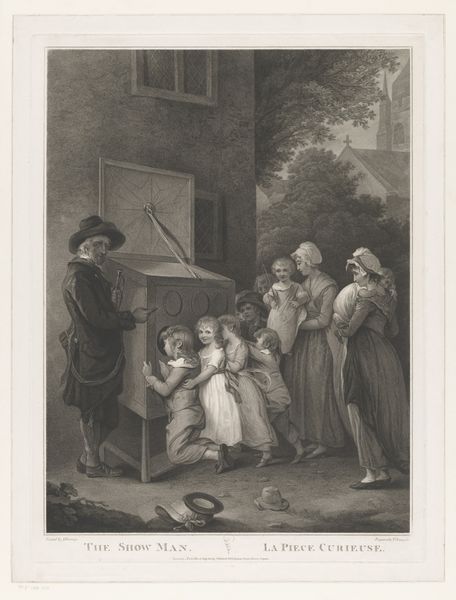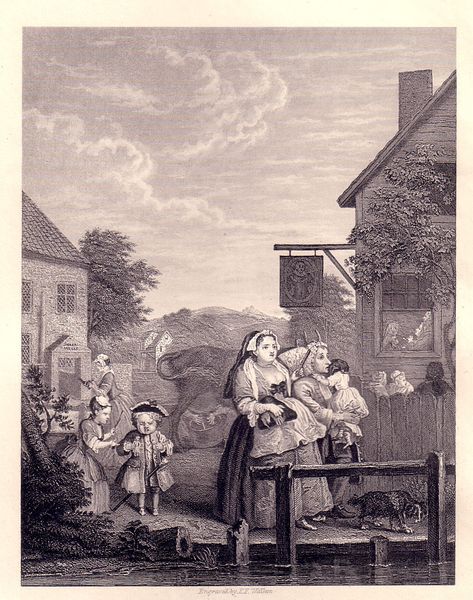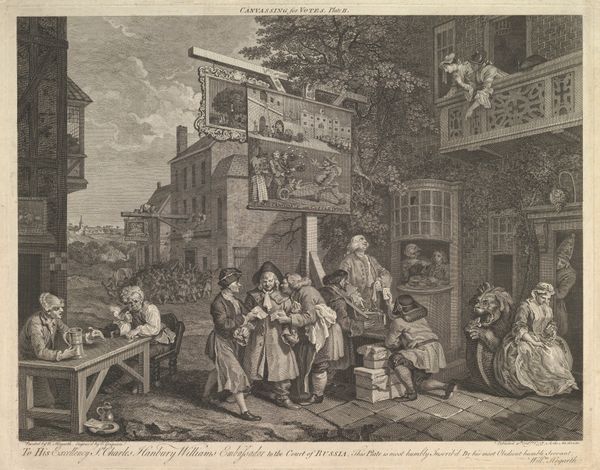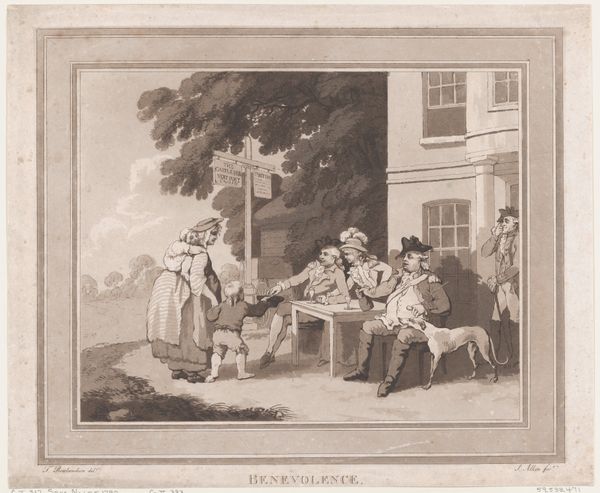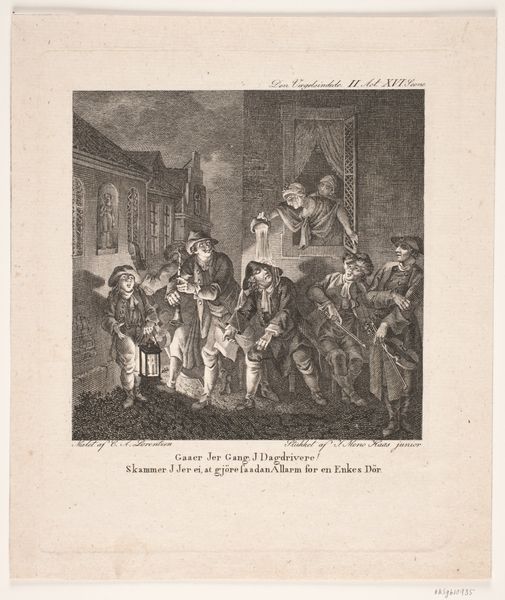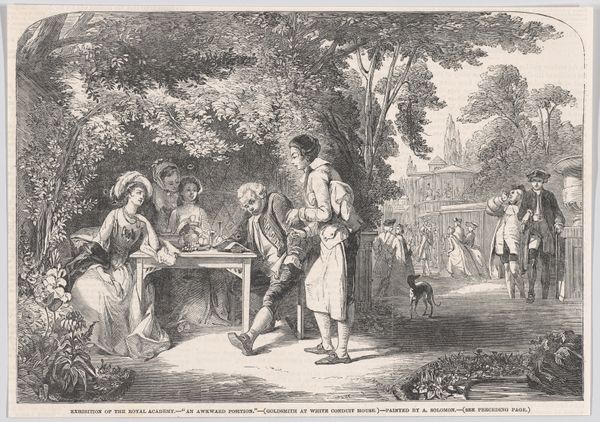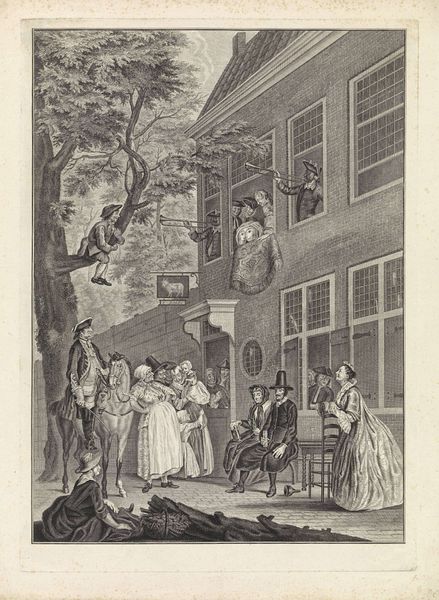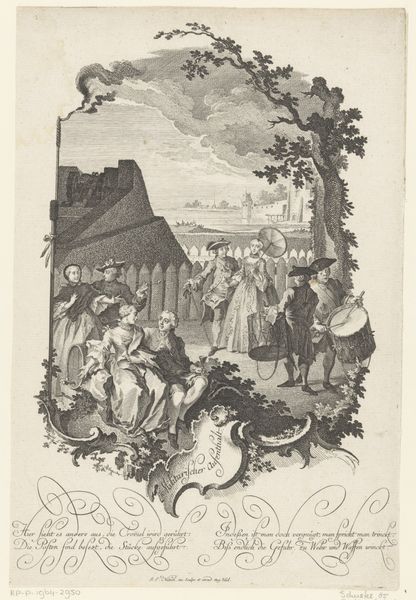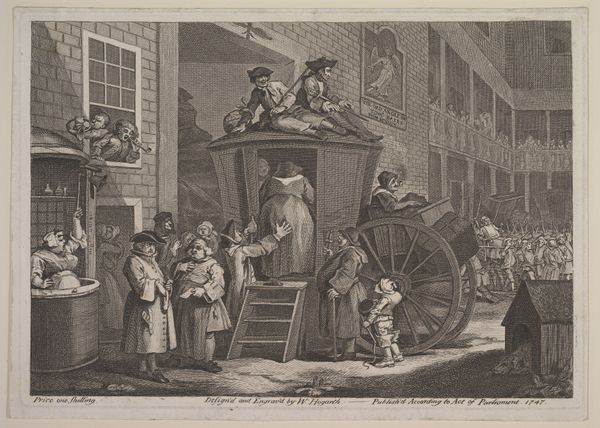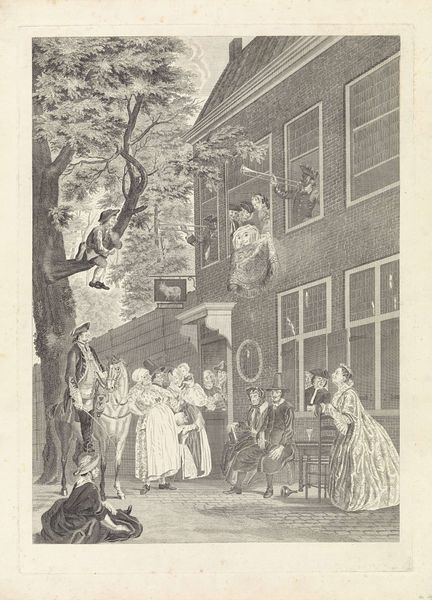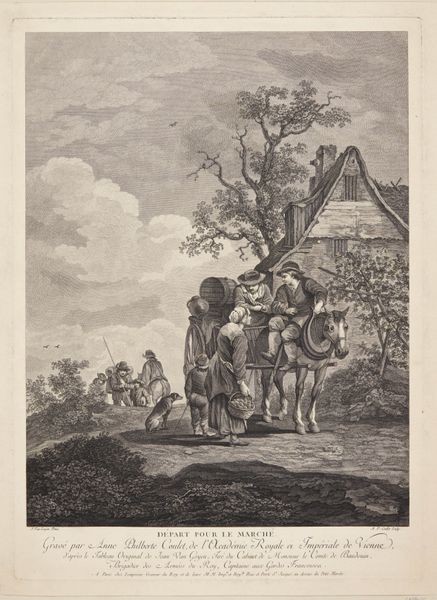
drawing, print, etching, engraving
#
drawing
#
baroque
# print
#
etching
#
dog
#
child
#
men
#
cityscape
#
genre-painting
#
engraving
#
building
Dimensions: plate: 19 5/16 x 15 3/4 in. (49 x 40 cm)
Copyright: Public Domain
Editor: This is "Evening" from "The Four Times of Day," a print by William Hogarth, made in 1738 using engraving and etching. It's such a busy scene, almost chaotic, but it also has a feeling of everyday life. What stands out to you when you look at it? Curator: I see the careful labor invested in creating these scenes. The print medium itself democratizes art, making it available for wider consumption. Consider the materiality of this etching—the paper, the ink, the metal plate used to create it. It speaks volumes about the production and dissemination of images in the 18th century. Editor: So, you are thinking about Hogarth’s methods and how that allowed his work to be shared, more than what he represented in the image? Curator: Precisely. This wasn't about elevating individual genius but rather understanding the mechanics of image-making. Where were these prints sold, and who was buying them? Were they hand-colored afterward, involving even more laborers? Editor: I see what you mean! The themes and subject matter point to an upper class enjoying its leisure, but Hogarth, as a printmaker, makes the art accessible. The production fights against the scene, in some ways. Curator: Absolutely! And look at the details within the print – how do they reinforce social hierarchies, or perhaps challenge them? Are there elements suggesting changing economic forces, or are these just pleasant views? Editor: Thinking about the economic and material realities really makes me reconsider my first impressions of the scene. It is not a snapshot of leisure. It is the product of it, and perhaps, an insight into how more people consumed art in that time. Curator: Indeed! Examining the materiality helps us see beyond the surface and consider the broader cultural landscape of artistic production and social life.
Comments
No comments
Be the first to comment and join the conversation on the ultimate creative platform.
